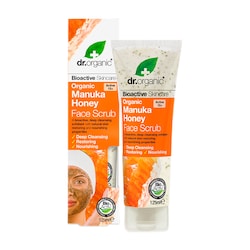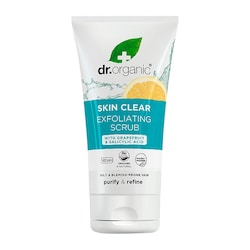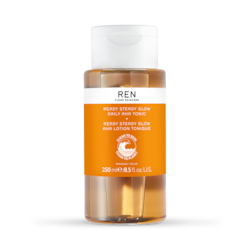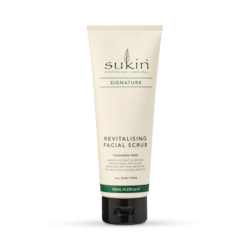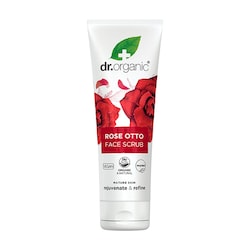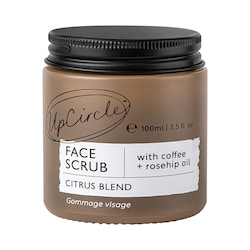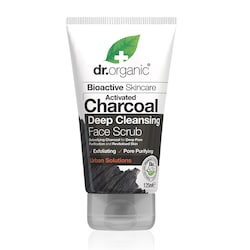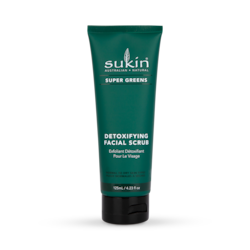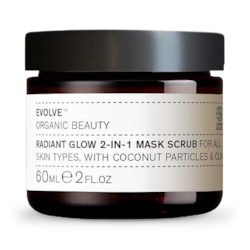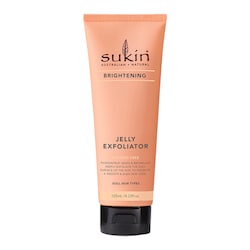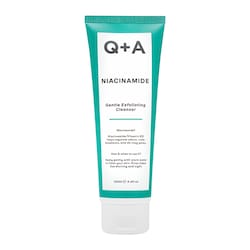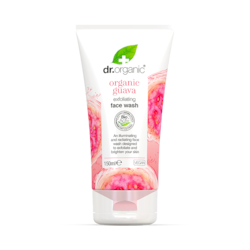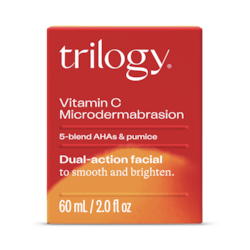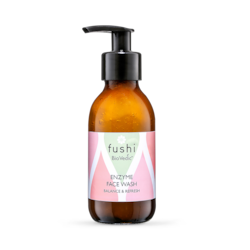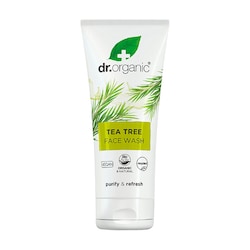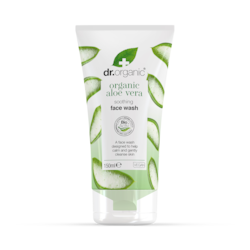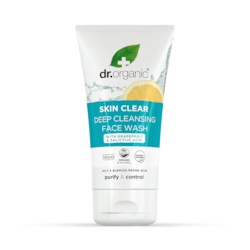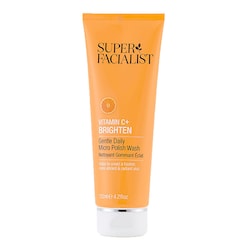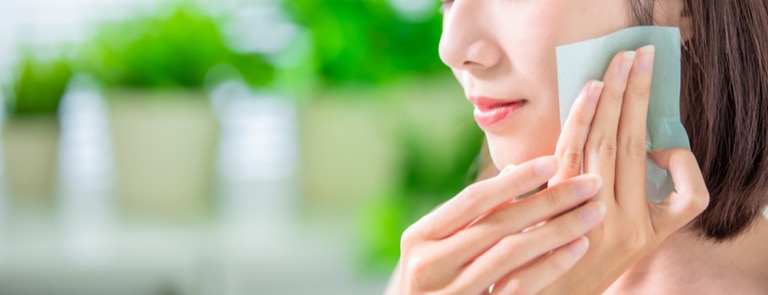20% off £30
Code:QUICK
12 homemade scrubs for your face

Want to exfoliate your face at home? Take a look at these 12 homemade scrubs for your face that can easily be made with what you have in your cupboard.
Summary
1What is exfoliating?
When you exfoliate, you remove dead skin cells from the top layer of your skin, which may sound a bit gross, but happens to be really good for skin...
2Why is exfoliating your skin important?
Getting into the habit of exfoliating, which is done either by using an exfoliating scrub product or chemical exfoliation product, can keep any...
312 of the best homemade face exfoliating scrubs
1. Homemade face scrub for glowing skin 2. Homemade face scrub for acne 3. Homemade face scrub for dry skin 4. A scrub for lips at home...
Have you been toying with the idea of making your own homemade face exfoliator?
Exfoliators, whether shop-bought or homemade, are good for scrubbing away dead skin cells and unclogging pores to reveal smoother and more radiant skin.
Although there are several exfoliating products available to buy, it’s surprisingly easy to make your own homemade exfoliator with ingredients you might already have in your kitchen cupboard.
What is exfoliating?
When you exfoliate, you remove dead skin cells from the top layer of your skin, which may sound a bit gross, but happens to be really good for skin.
Over time, dead skin cells, dirt and bacteria build up on our skin, regardless of how often we wash clean our face . And this build-up can block our pores, leading to breakouts and other skin issues.
Why is exfoliating your skin important?
Getting into the habit of exfoliating, which is done either by using an exfoliating scrub product or chemical exfoliation product, can keep any build-up in check and also help reveal glowing skin. What’s more, exfoliation is a crucial step in most facials, mainly because it helps pores absorb products better.
The older we get, the more important it is for us to exfoliate our skin. Why? Because as we age, the rate at which our skin cells regenerate naturally slows down. And this means old skin cells hanging around on our skin for longer. This can make skin dull, rough and dry and potentially lead to excess oil production and clogged pores that can cause blemishes.1
Summary
- When you exfoliate, you remove dead skin cells from the top layer of your skin
- Exfoliating can prevent dead skin, dirt and bacteria from building up and causing breakouts
- It can also help your skin to absorb facial products better too
12 of the best homemade exfoliating scrubs for your face

1. Homemade face scrub for glowing skin
Use this moisturising homemade salt scrub in the shower, up to two times a week, for a gorgeous glow.
How to use: Take a small amount of the mixture in your hands and gently rub it into your skin in a circular motion. Continue for up to two minutes and rinse off with warm water. After showering, pat your skin dry and apply a moisturiser or body lotion for super-soft skin.
Handpicked content: What are essential oils and their benefits?
- 150g coarse or fine sea salt
- 150ml olive oil
- 5 to 7 drops of the essential oil of your choice
- Pour the salt into an empty jar or container.
- Top up with the olive oil and mix well with a wooden stick or spoon.
- Next, mix in the drops of essential oil until well combined. Feel free to use your favourite essential oil or experiment with your own blend. Lavender and chamomile are often used for their soothing and relaxing aromas while lemon and peppermint are energising.
- Your scrub is now ready to be used or put away until your next shower.

2. Homemade face scrub for acne
Apply this scrub to oily skin on a regular basis to help prevent breakouts and blemishes. However, don’t use it too often or over scrub your skin, as this can lead to excess oil production, which can make breakouts worse.2
How to use: Using a brush, apply the paste evenly over your face. Scrub gently in circular motions and wash off with cold water after 7 to 8 minutes. After a few hours, wash your face with a regular cleanser and moisturise your skin.
- 3tbsp raw organic honey
- 1tbsp freshly ground cinnamon powder
- Mix the honey with the cinnamon powder.
- Stir the mixture together well until you have a paste that’s nice and smooth.

3. Homemade face scrub for dry skin
Coffee’s caffeine content reportedly supports blood circulation and stimulates the skin. It also contains antioxidants that help protect against UV damage and prevent moisture loss.3
How to use: Apply the mixture to your face by gently scrubbing in an upward circular movement for around 8 to 10 minutes. Wash off with cold water. Use twice a week for the best results.

4. A scrub for lips at home
Help your lips fully benefit from the healing properties of lip balm, and help plump them up too!4
How to use: Apply to your lips with your fingertips and gently slough off dry, dead skin cells by scrubbing in circular motions. Use a gentle technique and don’t over-exfoliate – this will avoid small tears from potentially being created in the skin. Rinse with warm water and follow with lip balm. Use this scrub once or twice a week.

5. Homemade face scrub for combination skin
Oatmeal contains compounds called phenols that have anti-oxidant and soothing properties. Meanwhile, yoghurt contains natural lactic acid that can help boost exfoliation and jojoba oil can add moisture without clogging pores.5
How to use: Apply to cleansed skin in gentle circles for about 30 to 60 seconds. Rinse the scrub from your skin with lukewarm water. Spoon any remaining mixture into an airtight container and store in the fridge for another time.
- 2tbsp finely ground rolled oats (organic if possible)
- 1tbsp organic plain Greek yogurt
- 1tbsp jojoba or coconut oil
- Using a coffee grinder or food processor, grind the oats into a fine powder.
- Mix all ingredients together in a mixing bowl.

6. Homemade face scrub for oily skin
Bananas contain nutrients, such as potassium, Vitamin C and traces of Vitamin A. They also contain silica, which can help boost collagen production.6
How to use: Apply the scrub to your skin in circular motions for 30 to 60 seconds, then wash off with warm water. Keep any leftover scrub in the fridge for another time.
- 1 ripe banana
- 2tbsp finely ground oatmeal
- 1tbsp organic plain Greek yogurt
- Mash up the banana with a fork until it’s smooth, but not runny
- Grind oats in a food processor to a fine powder.
- Mix all of the ingredients together a bowl until fully combined.

7. Homemade aloe face scrub
Aloe vera is packed full of calming, skin-soothing properties and is widely recognised as being an excellent moisturiser.7
How to use: Massage into skin for gentle exfoliation.
Handpicked content: Aloe vera: benefits, dosage & side-effects
- 1/4 cup brown sugar
- 1 tbsp aloe vera gel
- 1 tbsp extra virgin olive oil
- Mix all the ingredients together well.

8. Homemade almond and green tea face scrub
Almonds can help skin feel smooth and moisturised, while green tea adds antioxidants to the skin's barrier. This scrub is perfect for hydrating and plumping up skin.8
How to use: Slowly smoothe the mixture onto your skin.

9. Homemade kiwi and yoghurt face scrub
Yoghurt contains lactic acid that helps exfoliate skin in a non-abrasive way, making this scrub particularly useful for sensitive skin.9
How to use: Rub the formula in gentle circles around your face and rinse.
- 1 kiwi
- 2tbsp yogurt
- 2tsp olive oil
- Remove the skin of your kiwi and mash up the fruit on the inside.
- Combine the mashed kiwi with the yogurt and olive oil in a bowl.
- Rub the formula in gentle circles around your face and rinse.

10. Homemade flaxseed face scrub
Flaxseeds contain soothing and antioxidant properties that can potentially help reduce the appearance of fine lines and wrinkles.10 For added moisture, use oats instead of flaxseed.
How to use: Gently swipe it onto your face.
- 1/3 cup flax/flaxseeds
- 1 spoonful glycerin (or shea butter, jojoba oil, cocoa butter or avocado oil)
- 1tbsp white clay
- 1tsp sugar
- A splash of lemon juice
- Put the flax and a spoonful of glycerin in a bowl and then grind until smooth.
- Add the white clay, lemon juice and sugar.
- Mix all your ingredients together and then gently swipe them onto your face.

11. Homemade face scrub for sensitive skin
Soothing and calming, oats are ideal for sensitive skin. Ground oats gently unclog pores, while their natural saponins cleanse and absorb dirt and oil.11
How to use: Gently massage the mixture into your face and neck.
- ½ cup uncooked oats
- Water
- In a blender, pulse the dry oats until finely ground.
- Place a pinch of the ground oats into the palm of your hand and add water until a paste forms.
- Gently massage the mixture into your face and neck.
You may also want to try using milk or yogurt instead of water. They both contain lactic acid that works as a natural chemical exfoliant. Alternatively, add apple cider vinegar, which contains malic acid, to help make skin look that little bit brighter.

12. Homemade baking soda face scrub
Thanks to its super-fine texture, baking soda acts like an at-home microdermabrasion for all skin types. It also helps absorb excess oil, making it particularly useful for oily skin.12
How to use: Apply using gentle circular motions and rinse off with warm water.
- 1tsp baking soda
- Your liquid skin cleanser
- Add the baking soda into a few drops of your regular cleanser, and transform your cleanser into a gentle exfoliator.
Takeaway
Has this list of homemade face exfoliators made you realise most of the products that are sitting in your kitchen cupboard can actually be put to good use for your skin?
Most of them can be whipped up in a matter of minutes too, and if you get into the habit of applying these homemade exfoliators regularly, then you should soon start to see the results – brighter, clearer and more moisturised skin!
The advice in this article is for information only and should not replace medical care. Please check with your GP or healthcare professional before trying any supplements, treatments or remedies. Food supplements must not be used as a substitute for a varied and balanced diet and a healthy lifestyle.
While we strive for accuracy and balance, please be aware that this article may discuss products available for purchase through Holland & Barrett. Consult a healthcare professional before making any health-related decisions.
- https://www.femina.in/beauty/skin/homemade-natural-face-scrubs-for-healthy-skin-76560.html
- https://www.femina.in/beauty/skin/homemade-natural-face-scrubs-for-healthy-skin-76560.html
- https://helloglow.co/homemade-lip-balm-scrub-lip-plumping-cinnamon/
- https://www.healthline.com/health/homemade-facial-scrub#facial-scrub-recipes
- https://www.healthline.com/health/homemade-facial-scrub#facial-scrub-recipes
- https://www.womenshealthmag.com/beauty/a32186875/diy-face-scrub/
- https://www.womenshealthmag.com/beauty/a32186875/diy-face-scrub/
- https://www.womenshealthmag.com/beauty/a32186875/diy-face-scrub/
- https://www.womenshealthmag.com/beauty/a32186875/diy-face-scrub/
- https://helloglow.co/homemade-face-scrubs/
- https://helloglow.co/homemade-face-scrubs/


